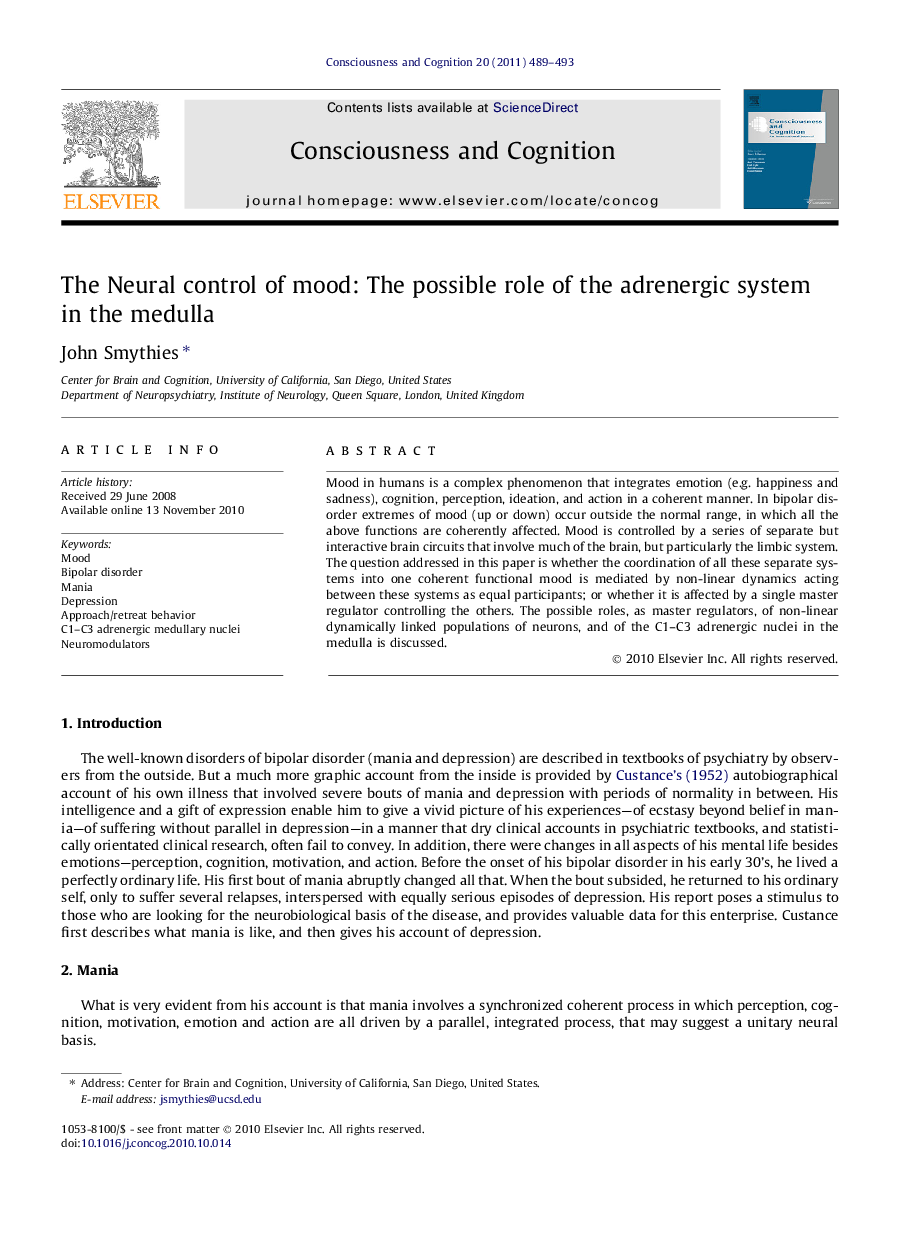| Article ID | Journal | Published Year | Pages | File Type |
|---|---|---|---|---|
| 10458682 | Consciousness and Cognition | 2011 | 5 Pages |
Abstract
Mood in humans is a complex phenomenon that integrates emotion (e.g. happiness and sadness), cognition, perception, ideation, and action in a coherent manner. In bipolar disorder extremes of mood (up or down) occur outside the normal range, in which all the above functions are coherently affected. Mood is controlled by a series of separate but interactive brain circuits that involve much of the brain, but particularly the limbic system. The question addressed in this paper is whether the coordination of all these separate systems into one coherent functional mood is mediated by non-linear dynamics acting between these systems as equal participants; or whether it is affected by a single master regulator controlling the others. The possible roles, as master regulators, of non-linear dynamically linked populations of neurons, and of the C1-C3 adrenergic nuclei in the medulla is discussed.
Related Topics
Life Sciences
Neuroscience
Cognitive Neuroscience
Authors
John Smythies,
